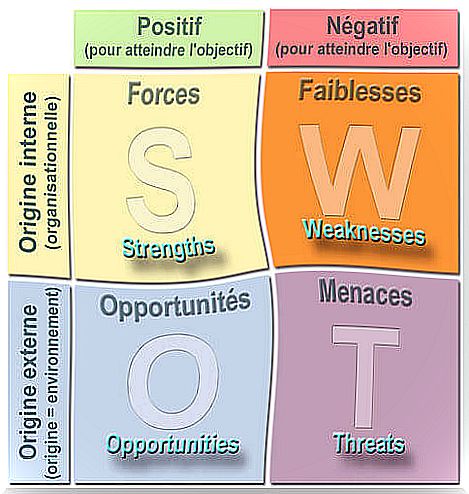How To Perform A SWOT Analysis

SWOT analysis, also known as SWOT or SWOT analysis, is a tool that allows to study the situation of a company, an institution, a project or a person through the analysis of its internal characteristics and external situation. This tool allows us to know the real situation in which an organization, a company or a project finds itself and to plan a strategy for its future.
When carrying out a SWOT analysis, it is essential to take one thing into account: it will give us a mixed picture. On the one hand, we will find weaknesses and threats and, on the other, strengths and opportunities. You should also know that a SWOT analysis is neither more nor less than a static model of reality in a specific moment in time. Therefore, it is not something that lasts over time: this analysis is modifiable depending on the circumstances in which it is carried out.
When performing a SWOT analysis, the first thing to do is to select the objective that we want to analyze and about which we want to make a decision. It can be a company, an institution, a project or even a person. Once the objective has been defined, an internal analysis will be carried out and then an external one. Subsequently, the data obtained will be fed into a matrix which will allow us to assess the situation of the object analyzed and to take the appropriate decisions.

Internal analysis
When analyzing the SWOT analysis internally, two factors should be taken into account: strengths and weaknesses. Strengths are the attributes that generate an advantage. If we perform an analysis on a company, we will have to analyze the availability of capital resources, personnel, assets and product quality, among others, to see if these are forces that allow that company to generate a competitive advantage. compared to its competitors.
On the other hand, the weaknesses would represent all the elements, the energy resources, the capacities and the attitudes of the company which suppose a handicap or which can limit the company. Weaknesses correspond to internal problems that must be identified in order to be able to eliminate them.
External analysis
An organization or a person cannot exist without the environment that surrounds them. The SWOT analysis, considered only from the point of view of the internal analysis, would not be correct because it would not explain anything to us about the relation with the outside. So the next step is to do an external analysis to see what opportunities and threats are in the context. A first step in discovering them is to look for what elements may have a relationship with the organization.
Opportunities will correspond to positive factors, while threats will correspond to negative factors. Opportunities are generated in an environment and, once identified, can be exploited. On the other hand, threats are the elements that can harm the organization: it will therefore be necessary to establish an adequate strategy to be able to eliminate them.
SWOT matrix
Once these steps are completed, it is necessary to organize all the data obtained with a matrix that goes from two to two. The more we schematize the data obtained, the easier their visualization will be. Fixing different points or spaces to establish each element in the previous two analyzes will help to achieve this process.

By placing the data in the matrix, we will find, on the one hand, the strengths and opportunities that correspond to the positive aspects of our company and the environment. They will form the potentialities: they indicate to us the lines of action or the decisions to be taken. The other part of the matrix will show us the limitations, the combination of weaknesses and threats. These limitations will constitute a warning.
This matrix also leaves us a third combination, that formed by the diagonals. The combination of strengths and threats forms risks, while the combination of weaknesses and opportunities forms challenges. The risks, like the challenges, will show us the way forward. They will also determine future actions.
Decision
Once at this point, our SWOT analysis is finalized. All that remains is to assess the results of the matrix and make the appropriate decisions. The whole process that we have followed so far is based on decision making, and more concretely on how we will organize the information necessary to make rational decisions based on objectivity. In addition, the SWOT analysis will allow us to create strategies for the future.
Even if the SWOT is done by seeking to make the correct decisions, the results will depend, in large part, on the quality of the information. The better the information we include in internal and external analysis, the less chance we have of making mistakes.
You are now ready to carry out your SWOT analysis and, if you want to go even further, you can supplement it with an analysis which consists of correcting weaknesses, confronting threats, maintaining strengths and exploiting opportunities.









